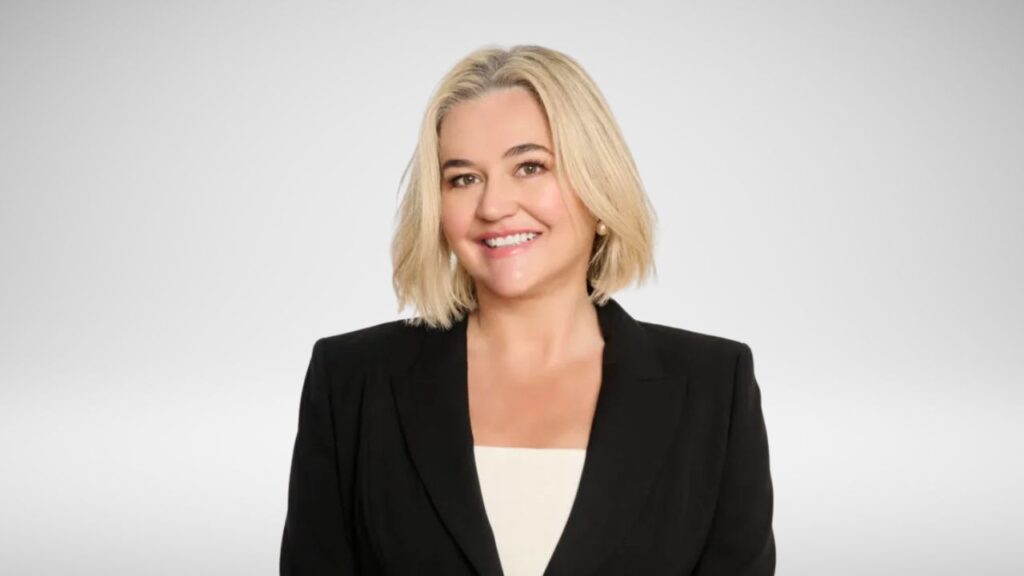In an increasingly crowded digital environment, boutique Byron Bay agency Kim Jones & Co has shown that thinking beyond the portals certainly pays off.
Opting out of Domain and REA for a recent listing in the Byron hinterland, the agency instead trialled a $2,500 targeted campaign via View Media Group’s Acquire platform.
The results? Twenty-two hard inquiries, 10 price requests and several serious buyers.
Within weeks, 95 per cent of the responses were completely new to her business.
The breakthrough wasn’t luck.
It was the result of understanding that buyers spend 37 minutes per month on property portals¹ but six hours per day online² — and reaching them where they actually consume content.

“We wanted to reach buyers beyond the obvious. People aren’t just scrolling REA or Domain anymore, they’re online all the time, often discovering homes by accident when something catches their attention,” she said.
Ms Jones, who relocated to the region after decades working in Sydney’s eastern suburbs, says the strategy suited her mission to stand apart as a boutique agency with international reach.
Traditional marketing assumed buyers only appeared once they were ‘ready to search’.
Today’s buyer is more often a passive scroller, forming preferences over weeks and months.
“With this listing, the 22 new inquiries weren’t even in our CRM system,” said Ms Jones.
“Even better, the campaign re-engaged buyers who had seen the listing before and drifted off, bringing them back into the fold.”
For Trent Casson, Managing Director – Residential at View Media Group, this reflects a broader shift.
The attention reality
The traditional property marketing funnel assumed buyers would search portals when ready to purchase.
Today’s reality is dramatically different.
They consume content on social media, browse lifestyle websites, read local news and engage with video content.

“By the time they hit the portals, they’ve often already formed strong preferences about what they want and where they want it,” Mr Casson said.
View.resi’s Acquire platform takes a different approach by targeting audiences who haven’t been reached through conventional channels.
Instead of retargeting people already browsing dozens of properties, it identifies prospects whose behaviour suggests purchase intent, sometimes before they’ve even begun an active search.
“We’re not just showing your listing to people who’ve already seen every other property in the area,” he explained.
“We’re finding buyers who might be perfect but would never discover it through standard marketing.”
Multi-channel strategy in practice
The most effective campaigns mix portal placement with strategic use of social media, premium publishers, video platforms and targeted display.
Each channel plays a role: social media highlights lifestyle, video shows features and neighbourhood character, while premium sites target niche demographics.
“We deploy campaigns across multiple channels because buyers are at different stages of their journey,” Mr Casson said.
“Someone might see your property on social media and start researching the area, then encounter it again on a lifestyle website and finally engage when they see it on a property portal. Each touchpoint builds familiarity and intent.”
The behavioural targeting edge
Advanced platforms build buyer profiles by analysing browsing patterns and content engagement.
“We’re looking at people who might be researching schools in an area, engaging with local business content or consuming lifestyle material that suggests they’re considering a move,” Mr Carsson said.
“These behavioural signals often predict purchase intent more accurately than direct property searches.”
Such buyers also tend to have fewer fixed price expectations, since they haven’t been conditioned by weeks of property browsing.
Impact on open homes
VMG data shows multi-channel campaigns achieve an average 27 per cent increase in open home attendance compared to traditional campaigns.
“The agents using multi-channel strategies report a completely different dynamic at their open homes,” Mr Casson observed.
“Instead of the same familiar faces going through the motions, they’re seeing new people who are genuinely excited about the property because they discovered it through channels that align with their interests.”
Choosing the right channel mix
Successful campaigns require matching channel selection to buyer behaviour.
Premium properties may benefit from luxury lifestyle websites, while family homes could perform well on parenting forums or school-focused platforms.
“We analyse where different buyer types consume content and place property marketing within those consumption patterns,” Mr Casson said.
“It’s about being present in the right context when buyers are in the right mindset, rather than interrupting them with property content when they’re focused on other things.”
Steps agents can take now
Mr Casson recommends a simple starting point: audit where your inquiries come from.
If less than 30 per cent originate from your own website, you’re overly dependent on rented audiences.
Next, identify where your ideal buyers consume content, parenting media for families, lifestyle websites for downsizers, finance sites for investors.
Finally, test small targeted campaigns, measure results and scale what works.
“The agents who master multi-channel buyer targeting now will have established audience development systems that their competitors will struggle to replicate,” he said.
Ready to expand your buyer reach? VMG’s view.resi solutions help agents implement sophisticated multi-channel targeting that finds qualified buyers across all the places they visit. Learn more at: https://view.com.au/viewresi/
Editor’s note: Marketing strategies involving data collection and behavioural targeting must comply with Australian privacy legislation and require appropriate user consent. Agents should seek legal advice before implementing targeting campaigns.
¹ Ipsos iris Online Audience Measurement Service, Jan-June 2024, P14+, PC/laptop/smartphone/tablets, text only, Brand Group, Homes and Property Category, , Average Minutes Per Person
² GWI Q3, 2024

